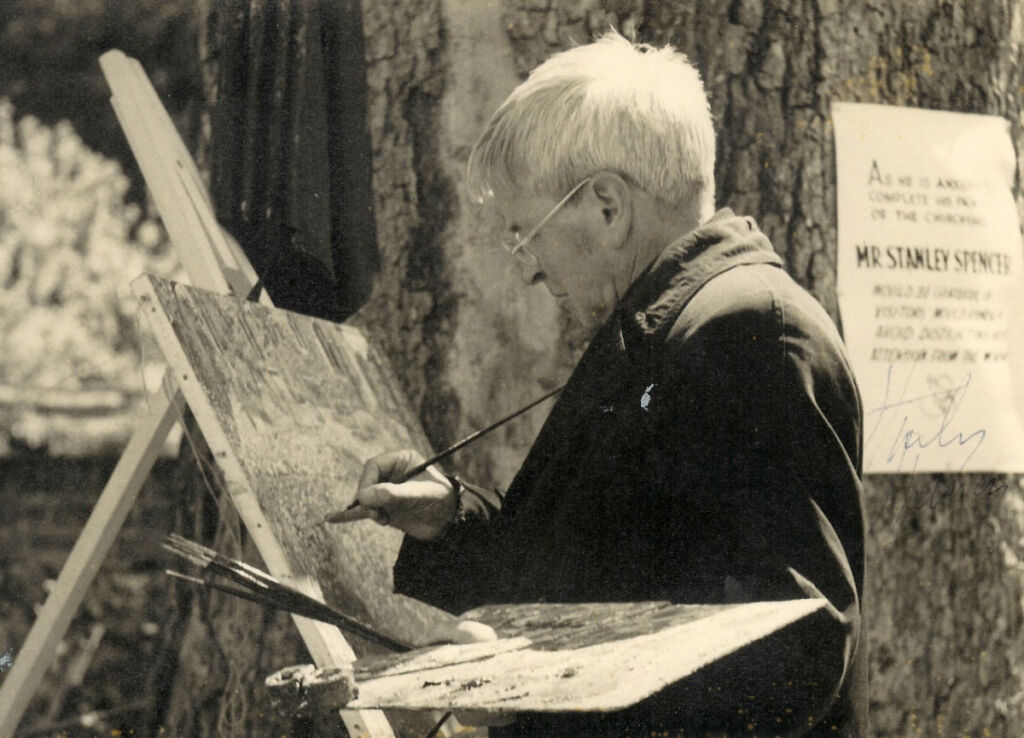

The Love, Art, Loss: The Wives of Stanley Spencer is an exhibition focusing on Hilda Carline and Patricia Preece, the two wives of the renowned British artist. Visitors to the show will be able to explore his unique love life and the effect the two women had on his work.
The Stanley Spencer’s Gallery’s Spring exhibition, Love, Art, Loss: The Wives of Stanley Spencer opened its doors to the public on the 15th August and features numerous works from the gallery’s own collection alongside loans from the Tate and Southampton City Art Gallery.
This new exhibition seeks to shed light on the effect the two women had on Spencer’s work and also looks into the bizarre love triangle that existed between them.
Who is Stanley Spencer?
When you think of British artists, names such as Bacon, Lowry, Hockney, Hamilton and Hirst are some of the more familiar names that spring to mind. But one name that is sometimes left out and deserves to feature in the list of Britain’s most significant artists is Sir Stanley Spencer.




Stanley Spencer’s love life was far from ordinary. In 1929, he met Patricia Preece in Cookham, Berkshire which is the village where he was born and was the inspiration for some of his most famous works. Ordinarily, a man meeting a woman wouldn’t raise too many eyebrows. But, at the time Spencer met Preece, he was still married to Hilda Carline.
Over time, he became captivated by Preece, which led him to divorce Hilda and ask for Patricia’s hand in marriage. To add a rather extraordinary twist to what would be a relatively normal tale; while they were being married, Preece was still living with her lover, the artist Dorothy Hepworth.
Eventually, Spencer moved to London to a bedsit in Swiss Cottage where he found himself having to support both Carline and Preece.
Nevertheless, he continued to paint both women resulting in some of his most powerful work. One of his most famous paintings, Double Nude Portrait: The Artist and his Second Wife (1937), depicts his own and Preece’s body in a frank non-idealised manner, the colours and textures of their flesh are juxtaposed with a raw joint of mutton.
This new direction which led to a series of work he began in 1937 entitled The Beatitudes of Love, about ill-matched couples, did not meet with approval from all his supporters. Indeed, it prompted the following response from his early patron, Sir Edward Marsh, ‘Terrible, terrible Stanley!’.
Spencer’s raw portrayal of his personal life and use of hyper-realism was unique amongst Modern British artists at this time. His unabated self-expression was truly avant-garde and his portraits, in particular, evoke the conflicting forces at play: love and objectivity, lover and wife, voyeurism and the gaze, the consummated and the unfulfilled.
The works in Love, Art, Loss, which include paintings and intimate studies, attest to the complicated but profound relationships he had with both women. While Preece refused his pleas for a divorce holding out to become Lady Spencer when he was knighted the year of his death in 1959, Spencer’s deep affection for the estranged Carline resumed in the 1940s – during which both suffered from depression – particularly through their letters, which Spencer continued even after her death in 1950.
The images used in this article were supplied by the Stanley Spencer Gallery.
Read more art-related articles in our dedicated section here.
